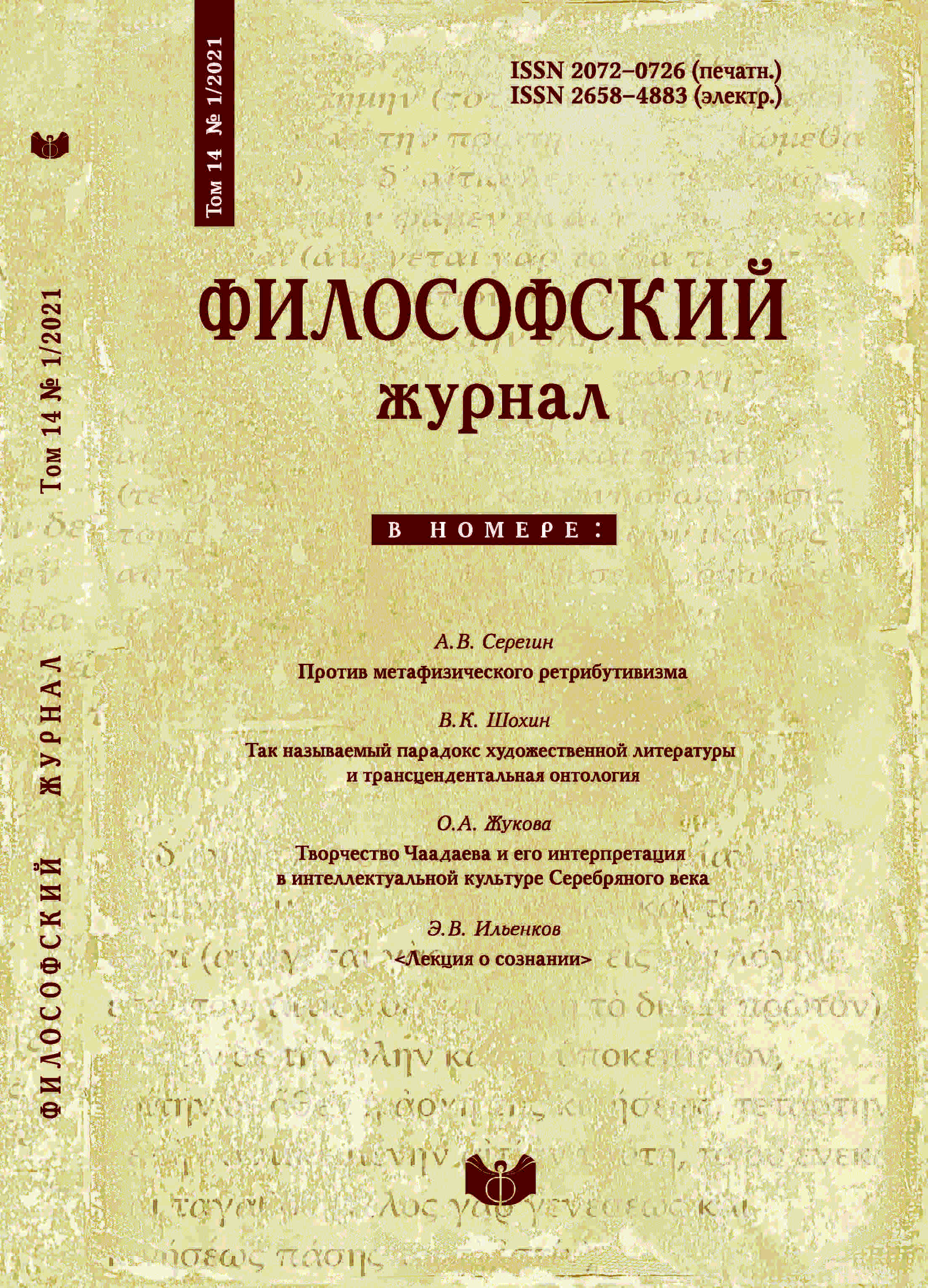At the origins of the neo-scholastic interpretation of kantianism:from C. Baldinotti to J. Kleutgen
DOI:
https://doi.org/10.21146/2072-0726-2021-14-1-113-128Keywords:
Scholasticism, Neo-Scholasticism, Neo-Thomism, Kantianism, Criticism, Theory of Knowledge, Philosophia PerennisAbstract
The article considers the first experience of interpretation and criticism of the Kantian doctrine of knowledge on the part of neo-scholastic thinkers in 1st half of the 19th century. It is shown that the transition from confessional polemics, which hadn’t philosophical interpretation, to the presentation and analysis of Kantian epistemology in Cesare Baldinotti’s treatise “Tentaminum metaphysicorum” (1817), when scholar takes an understanding of Kantianism as radical skepticism. At the same time, he left unanswered questions about what type of traditional concepts Kantianism refers, and how it can be described in the language of scholasticism. The first problem was solved by the Italian thinker Gaetano Sanseverino, who tried to correlate Kantianism with models traditionally opposed to scholasticism (like averroism). The second problem was solved by Jaime Balmes and Joseph Kleutgen, who outlined the boundaries of the compromise between scholasticism and Kantianism, trying to describe Criticism in terms of Thomism and show possible intersection points between these doctrines. As a result of these efforts, it becomes clear that the mechanical transfer of solutions developed in medieval scholasticism to the problems of modern European philosophy is not a successful polemic strategy. It was necessary to update the scholastic philosophy in a modern European context, which was subsequently carried out by Matteo Liberatore and the Neo-Thomists who followed him.






